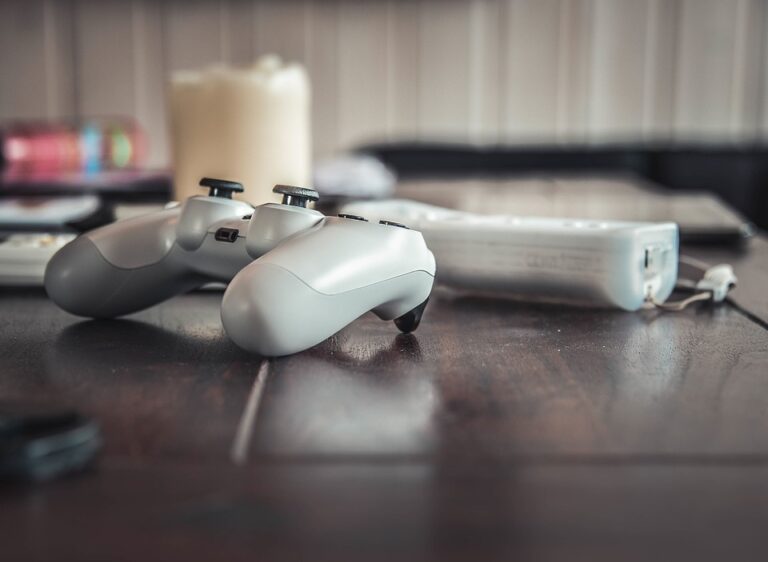Beauty Standards in Gaming: The Controversial Portrayal of Characters and Players
In the dynamic realm of gaming, beauty standards have become a topic of heated debate, especially as discussions surrounding gaming controversies continue to rise. Players and characters alike are often subject to unrealistic expectations based on societal norms and media portrayals. This article explores how these standards shape the gaming community, the impact on players, and the broader implications for the industry.
The Weight of Beauty Standards in Gaming
Beauty standards can heavily influence character design and player experience in gaming. Stats from a recent survey published by the International Game Developers Association (IGDA) reveal that over 70% of gamers think that character designs often reflect unrealistic beauty ideals. This raises questions about representation and diversity in an industry that is more inclusive than ever.
Unpacking the Standards: Characters vs. Players
Character Portrayals
In many popular games, female characters are frequently depicted with exaggerated physical features—slim waists, large breasts, and flawless skin—while male characters are typically portrayed as muscular and rugged. Such portrayals contribute to a narrow definition of beauty. For instance, the "Attractive People in Video Games" phenomenon can be highlighted through characters like Lara Croft in Tomb Raider and Nathan Drake in Uncharted, who embody hyper-realistic beauty standards.
Player Perspectives
The portrayal of beauty extends beyond characters to the players themselves. Many gamers express pressure to conform to idealized appearances, especially in the wake of streaming platforms where visual representation plays a critical role. Research shows that female gamers are more likely to support diversity and push for realistic representations, illustrating the disparity in expectations from players versus character portrayals.
Gaming Controversies: Response and Resistance
As the gaming community continues to grapple with gaming controversies, several movements advocate for more realistic and relatable character designs. For instance, the #GameDevChallenge encourages developers to create more diverse characters, reflecting a range of shapes, sizes, and ethnic backgrounds.
Industry Shifts
The positive response to these movements is beginning to reverberate throughout the industry. One notable example is The Last of Us Part II, which introduced a more diverse cast of characters and focused on deep storytelling, diverging from traditional beauty norms. This shift not only addresses the controversy but also resonates with gamers seeking a greater connection to the characters they play.
Impact on Community and Well-being
The debate over beauty standards in gaming leads to broader questions regarding mental health and self-esteem. Players, particularly women and marginalized groups, may feel inadequate when comparing themselves to iconic game characters. According to a 2023 study by the American Psychological Association, 54% of women reported feeling less satisfied with their appearance due to the portrayal of women in video games.
The Role of Developers and Streamers
Developers and influencers in the gaming space play a key role in shaping public perceptions. Some game developers are proactively collaborating with mental health organizations to emphasize the importance of positive body image in their designs. Additionally, content creators are leveraging their platforms to promote body positivity, showcasing a range of appearances and encouraging their audience to embrace themselves.
Moving Toward Inclusivity
The last few years have highlighted efforts in gaming to break away from rigid beauty standards and embrace inclusivity. Successful franchises are beginning to reflect a broader spectrum of beauty, enhancing character depth and encouraging positive community interactions.
The Future of Character Design
As we move forward, the representation of beauty in gaming is likely to evolve. Increased awareness among gamers and developers can shape future games to include diversity not just in aesthetics, but also in storytelling. By fostering a gaming culture that values authenticity over superficiality, the industry may lead to healthier perceptions of beauty.
Conclusion: Balancing the Scale
The ongoing discussions surrounding beauty standards in gaming have unveiled a realm rife with potential for positive change. As the industry navigates these gaming controversies, it becomes essential to prioritize authentic representations that celebrate diversity and inclusion. The beauty of gaming lies not only in its visual design but in its power to create meaningful connections and foster a sense of belonging for all players.
For further insights on diversity in gaming, check out our articles on The Evolution of Character Representation in Video Games and Mental Health Awareness Among Gamers.
Suggested Readings
Images Suggestions:
-
An illustration comparing unrealistic character designs to more relatable ones, with alt text “Gaming Controversies: Unrealistic vs. Realistic Character Designs”.
- A screenshot from The Last of Us Part II showcasing diverse characters, with alt text “Gaming Controversies: Diverse Character Representation in Gaming”.
By maintaining awareness and dialogue surrounding beauty standards, the gaming community can foster an inclusive environment that promotes self-acceptance and individuality.


